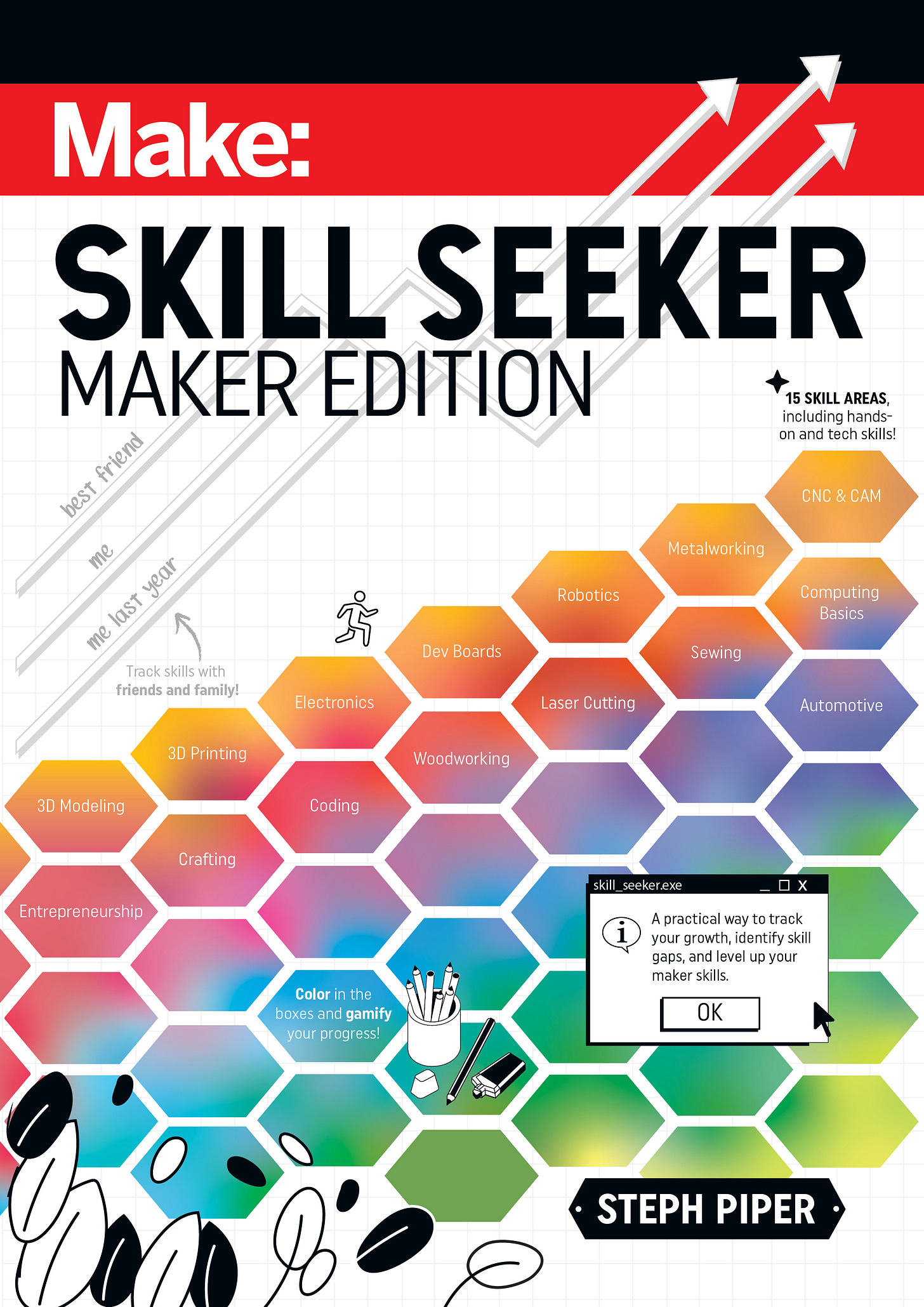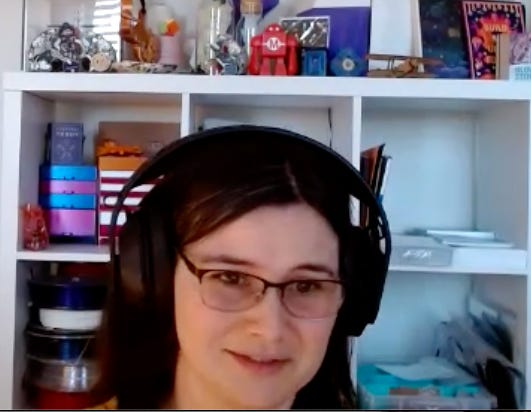Maker Skill Trees
Steph Piper's Skill Seeker maps the world of Maker skills
Steph Piper describes herself as a “creative technologist, passionate about maker culture, hardware dev and edutech” on her website, Maker Queen. I spoke to Steph in August about her Maker Skill Trees project, which fascinated me. We agreed to have Make publish her book, and it just went to the printer. Below is the first excerpt from our interview in August.
Steph Piper’s Background
I'm based in Australia in Queensland and my town that I live in is called Toowoomba. It's about an hour and a half from Brisbane and it's a lovely little regional spot. We're called the Garden City.
My day job is running a library makerspace out at the University of Southern Queensland, and I really love my job out there.
I get to work with the students a bit more one on one because we're a smaller university, and it's always an absolute delight to see the students learning those skills and putting them into practice. I also have a side hustle outside of work called Maker Queen, where I make electronics kits aimed at young kids.
What's special about my electronics kits is that I was able to find a factory that does two different solder mask colors on them. So they look a little bit like enameled pins when you see them for the first time. And I recently also crowdfunded a wearable technology project as well, called GlowStitchLEDs. These are LEDs that you can sew with a sewing machine. At the core of my making, I'm really into finding ways to make learning a lot easier and more fun.
Educational Makerspaces
I actually studied at my university that I now work at. I'd moved down to Brisbane and I was president down at the big Brisbane hackerspace. At the time, it was the biggest one in Australia.
We had all the usual stuff, plus metalworking and woodworking and welding and blacksmithing. And I was president there for two years. And I got a little email from my old university one day that said, “Hey, can you help us set up a makerspace?” And I said, of course. So I drove down the road an hour and a half and sat the lady down and essentially told her how to do her job in running the space.
And then she sent me the job ad. She was setting it up for someone else. That's how I ended up getting the role. But I really loved my time at Brisbane Hackerspace. I really cut my teeth in that space. And one of my favorite things about that space was that we had a 24 hour swipe card access system. You could actually set your own theme song to play when you swiped in through the door, which would play on every Cisco phone in every room. So you soon got to know what everyone's theme songs were. It was such a fun space.
What’s great about a library space is that it's open to all staff and all students. So you don't just have to be an engineering student or an art student to access the space. And my focus is really on the upskilling side of things and making sure that people feel really confident and independent on the tools when they come in to use them. I don't particularly want to be holding everyone's hand all the time. I really want to be able to get them in and give them the knowledge and tools to just sit down and put on a 3D print themselves, ask me a question if they need to. That's the kind of independence I really want to see, where you want to really give the students those hands-on skills.
I asked Steph about whether there are makerspaces in lots of schools in Australia.
Definitely. Like in the private schools they're pretty prolific. They give them all kinds of names as well like “innovation spaces.” But they are not as prolific as you would want in public schools. I still come across quite a lot of teachers who have gotten grant money to put together a makerspace, but they've only been able to get one 3D printer and it's sat in the corner with some kind of a clog or a problem and no one knows how to fix it.
My advice to those schools is that they really need to hire someone or find someone to really champion that space and actually not make the teachers do the hard slog of keeping things running.
Maker Skill Trees
I've been working on a huge repository of printable skill tree templates that you can print out on just an A4 sheet of paper and you can use it as like a kind of a video game inspired pathway to learning a new skill and how you use it is it looks a whole array of tessellated hexagons and you start at the bottom and you just color in any of the tiles that you've done. Printables and templates available on the project’s Github repository.
So the tiles might say stuff, for example, on the 3D printing tree like: Put on a 3D print for the first time, Make a 3D model, all that kind of stuff with a bit more detail. As you progress up the tree, it gets into the more advanced realm. It's a really great way to easily visualize what your skilled progress is spot any skill gaps that you might have because obviously you just don't know what you don't know, and get inspired to maybe try some new things.
And it really helps me personally. I've been really surprised to sit back and be like, Oh, actually, I am stuck in a little bit of a rut with some of my learning there. I've gotten caught in my same old cycle and way of doing things, and I'm not trying new things. Which is so easy for us to do.
But the way that this project started was, it was inspired through my work in the makerspace at work where, I see so many students come through the space and they're excited about it, but because it's not a compulsory activity, it's an extracurricular one, often a lot of students miss out on those opportunities.
A lot of people expect a skill tree to look like a tree, but I think in reality, the way that we learn and do things is quite out of sequence sometimes. And like it doesn't particularly need to be in sequence. We can be jumping to advanced stuff after only doing a few basic things. And that's pretty normal way of doing things. And when you think about how you go about becoming good at something or becoming advanced in something, it really is just about breaking up little tiny tasks into little chunks. And that's exactly what this is.
Next week, I’ll publish another part of this interview with Steph Piper.
Update on Cohorts
Godwyn has been organizing the cohort program. There 28 people total in three groups that will begin meeting next week. The cohorts were organized around the time that it was best for the members to meet: a weekend, a weekday morning and a weekday evening.
“Almost everyone wants to work on or discuss curriculum,” said Godwyn. “The first meeting will be to meet and talk about what each person wants to accomplish.”
If this is the first you are hearing about the cohorts, see this post where I announced the program. The goal is to organize small groups of maker educators so that they can easily connect with their peers and share their ideas and work in educational makerspaces and K12 maker curriculum.






